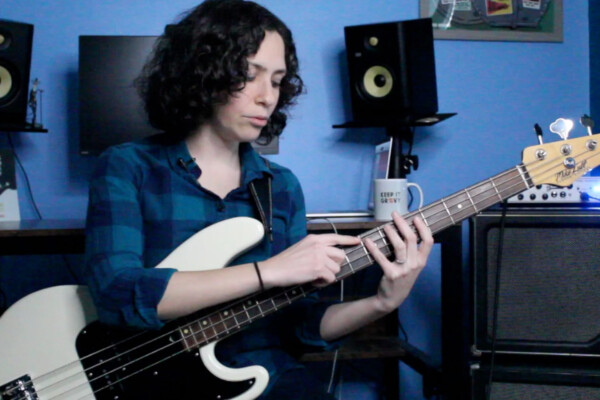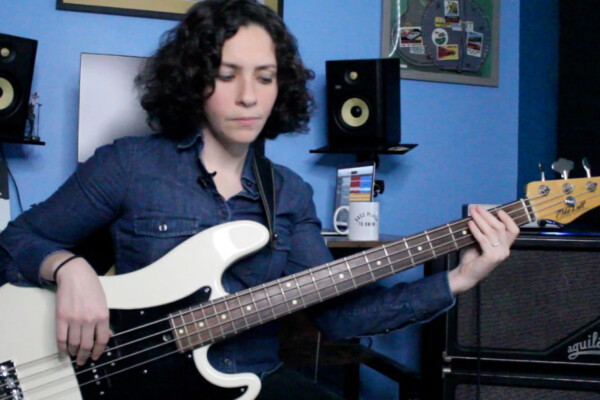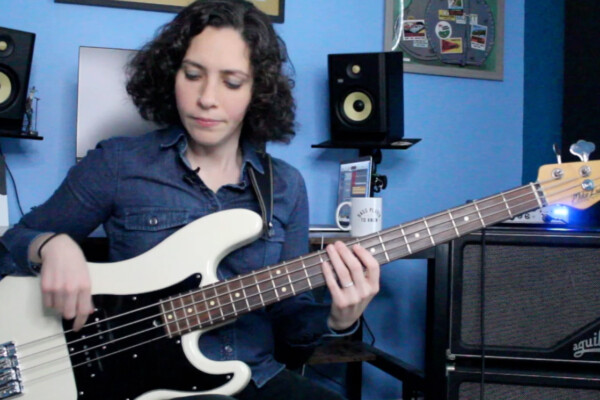Bass Lessons - Page 3
Talking Technique: Bass Octaves and Chromaticism with Slides and Hammer-Ons
In this video, Ari opens up the idea factory again: Octaves, chromaticism, peppered with slides and hammer-ons. These are tools to make your grooves to come alive!
Nailing The Bass Intro To “My Girl” By Palm Muting and Getting a Vintage Tone
In this lesson, we’ll learn how to keep it groovy by palm muting and using our thumb — a slightly different technique compared to standard finger-style playing. To practice this, we’ll play the distinctive intro part to “My Girl” by The Temptations.
Bass Transcription: Jaco Pastorius’s “Amelia”
Alex Lofoco returns with a new look at one of Jaco Pastorius’s earliest tunes: “Amelia,” which Jaco performed with Wayne Cochran & The CC Riders. Check out the story and transcription.
Keep It Groovy: Learn The Bass Line To The Beatles’ “Eight Days A Week”
Today, Ryan Madora keeps it groovy by learning triads, following a chord progression, and applying a walking bass line by taking a page from Paul McCartney’s book and “Eight Days A Week.”
Keep It Groovy: Using Major and Minor Triads and Making Them Groove: 1-6-2-5 in the key of A
In this “Keep It Groovy” lesson, we take a look at combining our major and minor triad shapes to fit a key and chord progression. We’ll focus on the good ol’ 1-6-2-5 in the key of A.
Keep It Groovy: Learn Minor Triads and Make Them Groove (Key Of A)
In this “Keep It Groovy” lesson, we take a look at minor triad shapes on the bass and figure out how to transform them from an exercise to a groove.
Keep It Groovy: Learn Major Triads and Make Them Groove (Key Of A)
In this “Keep It Groovy” lesson, Ryan Madora takes a look at major triad shapes on the bass and figures out how to transform them from an exercise to a groove.
Keep It Groovy: Using Open Strings: How To Play A Slow Blues In C
Today’s “Keep It Groovy” lesson is all about versatility, understanding the fretboard, and integrating open strings. This one piggybacks off a previous lesson on playing a slow blues. This time, we’ll find the bass part in a different position.
Tapping Technique and Composition: Tapping Chord With Melodies on “Riches to the Conjuror”
The final installment of John Ferrara’s excellent “Tapping Technique and Composition” lesson series on No Treble is here. In this episode, John shows one way that we can accomplish playing a melody on top of an arpeggiated chord progression.
Keep It Groovy: Integrating Concepts In Our Walking Bass Lines
In this “Keep It Groovy” lesson, Ryan Madora plays through a very common chord progression in jazz and pop, the 1-6-2-5 chord progression. We’ll learn how to integrate different concepts to begin building a walking bass line.
Keep It Groovy: How To Play An Easy Slow Blues In C
In this bass lesson, Ryan Madora keeps it groovy with a nice slow blues in the key of C. She focuses on an incredibly common bass pattern for a slow blues that can also be sped up and adapted to a blues shuffle.
Tapping Technique and Composition: Percussive Bass Tapping on “Riches to the Conjuror”
For his newest “Tapping Technique and Composition” lesson, John Ferrara says, “Let’s turn the bass into a drum, shall we?” The technique used in this lesson is his new favorite to play with in a solo bass setting.











